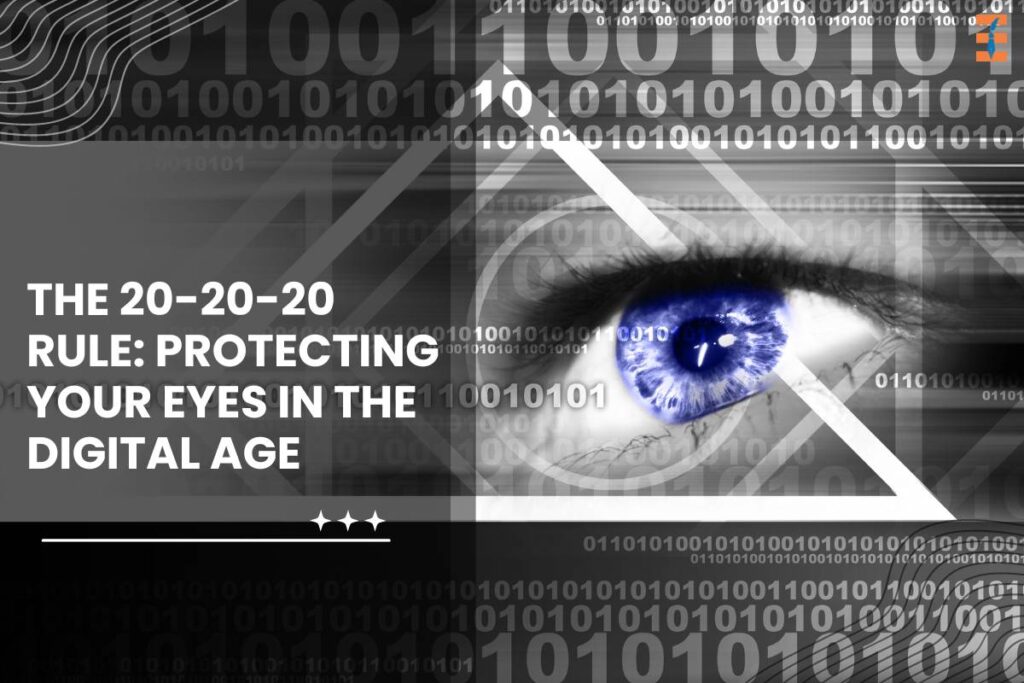In today’s digital age, our eyes are constantly bombarded with screens – from computers at work to smartphones in our pockets. While these devices have revolutionized how we work, communicate, and access information, they also pose risks to our eye health. The constant exposure to screens can lead to digital eye strain, also known as computer vision syndrome, causing symptoms like dry eyes, blurred vision, headaches, and neck or shoulder pain. To combat these issues, experts recommend following the 20-20-20 rule, a simple yet effective guideline to protect our eyes from the negative effects of prolonged screen time.
What is the 20-20-20 Rule?
The 20-20-20 rule is easy to remember and implement in your daily routine. It suggests that for every 20 minutes spent looking at a screen, you should take a break and look at something 20 feet away for at least 20 seconds. This brief pause allows your eyes to relax and refocus, reducing strain and fatigue associated with prolonged screen use.
Why Does it Work?
Our eyes are not designed for prolonged focus on digital screens, which emit blue light and require constant adjustment from our eye muscles. Continuous screen time without breaks can lead to overexertion of these muscles, contributing to eye strain and discomfort. By following the 20-20-20 rule, you give your eyes regular intervals of rest, preventing them from becoming strained and improving overall comfort and productivity.
Implementing the Rule in Your Routine
Incorporating the 20-20-20 rule into your daily activities is simple and beneficial. Here are some tips to help you integrate this rule into your screen time routine:
1. Set Reminders

Use alarms or productivity apps to remind yourself to take breaks every 20 minutes.
2. Follow the Rule Consistently
Make it a habit to follow the rule whether you’re working, gaming, or scrolling through social media.
3. Practice Eye Exercises
During your breaks, incorporate eye exercises like blinking, focusing on distant objects, or rolling your eyes gently to further relax your eye muscles.
4. Adjust Screen Settings
Reduce screen glare, adjust brightness levels, and maintain proper screen distance to minimize eye strain.
5. Hydrate and Blink
Drink plenty of water to keep your eyes hydrated, and remember to blink regularly to prevent dryness.
Benefits of the 20-20-20 Rule:
Adopting the 20-20-20 rule offers several benefits for your eye health and overall well-being:
1. Reduced Eye Strain

Regular breaks help prevent eye strain, dryness, and discomfort associated with prolonged screen use.
2. Improved Focus and Productivity
Refreshed eyes lead to better focus, productivity, and reduced errors in tasks that require visual concentration.
3. Prevention of Long-Term Damage
Consistent adherence to the rule may lower the risk of developing long-term eye problems related to digital eye strain, such as myopia or worsening of existing vision issues.
4. Enhanced Overall Comfort
By taking care of your eyes, you promote overall comfort and reduce the likelihood of headaches, neck pain, and other discomforts associated with extended screen time.
Understanding Digital Eye Strain
Before delving deeper into the benefits and applications of the 20-20-20 rule, let’s understand the phenomenon of digital eye strain.
Digital eye strain, also known as computer vision syndrome (CVS), is a condition caused by prolonged use of digital devices such as computers, smartphones, tablets, and e-readers. The symptoms can vary from mild discomfort to more severe issues like blurred vision, headaches, dry eyes, and neck or shoulder pain. Factors contributing to digital eye strain include the constant focusing and refocusing required by screen use, glare from screens, improper lighting, and poor posture while using devices.
Studies have shown that the prevalence of digital eye strain has increased significantly with the rise in digital device usage for work, education, and leisure activities. According to the American Optometric Association, up to 50-90% of individuals who use computers or digital devices for extended periods experience symptoms of digital eye strain.
The Role of the 20-20-20 Rule in Eye Health
Now, let’s delve into how the 20-20-20 rule specifically addresses the challenges posed by digital eye strain and promotes better eye health:
1. Relaxation of Eye Muscles
By taking regular breaks and focusing on distant objects, the 20-20-20 rule helps relax the muscles responsible for focusing on screens. This reduces strain and fatigue, allowing your eyes to work more comfortably.
2. Improvement in Blinking Frequency

Staring at screens often leads to reduced blinking rates, which can cause dry eyes and irritation. Taking breaks with the 20-20-20 rule encourages natural blinking, maintaining proper eye lubrication, and reducing discomfort.
3. Prevention of Accommodative Spasms
Prolonged screen use can sometimes lead to accommodative spasms, where the eye muscles struggle to focus properly. Regular breaks with the 20-20-20 rule can help prevent these spasms and maintain clear vision.
4. Encouragement of Posture Changes
The 20-20-20 rule prompts you to step away from your screen regularly, encouraging posture changes and reducing the risk of neck, shoulder, and back pain associated with prolonged sitting and screen use.
Beyond the Rule: Additional Tips for Eye Health
While the 20-20-20 rule forms a crucial part of maintaining good eye health in the digital age, several other practices can complement its benefits:
1. Ensure Proper Lighting
Avoid glare and harsh reflections on your screen by adjusting lighting conditions in your workspace. Use curtains, blinds, or anti-glare filters on screens to minimize strain.
2. Optimize Screen Settings
Adjust screen brightness, contrast, and font size to levels that are comfortable for your eyes. Consider using blue light filters or specialized computer glasses to reduce the impact of blue light emissions from screens.
3. Follow the 20-20 Rule for Body Posture
In addition to taking visual breaks, follow the 20-20-20 rule for posture as well. Every 20 minutes, stand up, stretch, and walk around for at least 20 seconds to maintain overall physical well-being.
4. Visit an Eye Care Professional
Regular eye exams are essential for detecting any underlying vision issues and addressing them promptly. Your eye care professional can also provide personalized recommendations for maintaining eye health based on your lifestyle and visual needs.
Conclusion: Prioritizing Eye Health in a Digital World
In a world where digital devices play an integral role in our daily lives, prioritizing eye health is crucial. The 20-20-20 rule serves as a practical and effective tool to combat digital eye strain and promote overall eye comfort. By incorporating this rule alongside other eye-friendly practices, you can safeguard your vision, enhance productivity, and enjoy a more comfortable digital experience. Remember, healthy eyes contribute not just to your work performance but also to your overall quality of life. Start implementing these strategies today for happier, healthier eyes tomorrow!
Also Read: What Kind Of Education Is Required To Start Your Own Medical Spa










